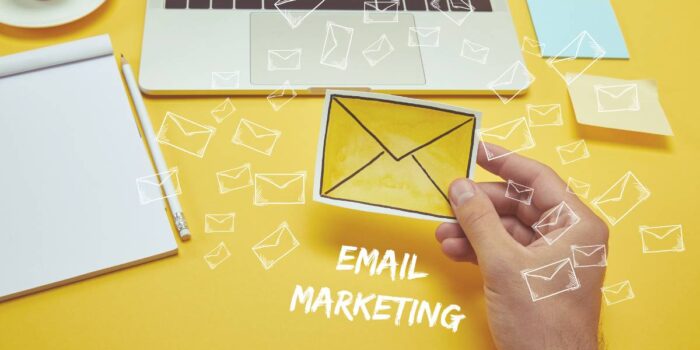Email marketing is a powerful way to nurture loyal customers and build brand trust. Emails that are relevant, eye-catching and responsive are sure to boost your sales and make your clients become your evangelists.
The key to an effective ecommerce email marketing strategy is using a combination of promotional and transactional emails. These emails are triggered by certain customer actions and include order confirmations, shipping notifications and more.
1. Personalized Emails
Personalized emails that speak directly to your subscriber’s interests are the most effective way to drive email open rates. And when it comes to ecommerce, personalization is crucial for increasing sales and conversions.
For example, Sephora uses triggered emails to remind customers of the products they’ve purchased and recommends additional products that are relevant to those items. This is a great way to increase sales and build long-term customer loyalty.
The key to a good personalized email is making it feel less like an advertisement and more like a friendly suggestion from a friend. To do this, avoid using jargon and use humor in your copy. Humor will make your emails feel more personal and will encourage subscribers to interact with them. This will increase your email deliverability and improve your overall ROI.
2. Segmentation
Market segmentation is a powerful email marketing strategy that allows organizations to target their messages and offerings to specific audiences. These segments can be based on a variety of criteria, including demographics, psychographics, behavior and location.
Using ecommerce email marketing strategies like this can help businesses grow their customer base and build loyalty with existing customers. For example, a furniture eCommerce business can send emails to customers that encourage them to purchase additional products or to make a repeat purchase by offering a discount.
Alternatively, the organization can also use behavioral email marketing to create personalized offers that are based on what a customer has been viewing or purchasing on the website. This can be particularly effective when trying to win back a former customer. Personalized subject lines are also a great way to increase email open rates.
3. Automated Emails
One-off email campaigns and newsletters still have their place, but the smartest companies use email automation to send highly personalized, hyper-relevant messages that drive engagement, visits and revenue.
Ecommerce brands often run automated email campaigns to engage and retain customers. This could include simple “thank you” emails after a purchase, product recommendations based on customer ratings or even re-engaging lapsed customers through “win back” campaigns.
These types of automated emails are known as transactional or lifecycle campaigns and can be a great way to build customer retention. It’s important to remember that these kinds of emails are considered marketing communications and must adhere to CAN-SPAM and CASL regulations. An easy way to do this is by using a brand-specific opt-out system that allows users to manage their preferences. This will also help you avoid spamming your audience.
4. Responsive Design
Now that mobile devices have overtaken desktop computers it is more important than ever to make sure your website is responsive. Responsive design is a way to adapt your website to different screen sizes without having to build separate desktop and mobile versions.
A good example of a well-designed responsive site is the New York Times. Their layout is crowded with visuals but their smart content prioritization allows users to instantly see what they want without having to scroll endlessly.
Email marketing is a powerful tool for eCommerce brands that inspire loyalty with customers and cultivate long-term relationships. By creating personalized promotions, it can help increase customer retention and drive revenue through a higher average order value. But to ensure that your emails reach their intended recipients, it is critical to have a solid email deliverability strategy.
5. Test Your Emails
Email testing helps you ensure that your emails are technically sound and will display correctly on all devices. It also gives you a way to compare various elements in your emails and see which ones have the best impact on your subscriber’s behavior. You can test everything from subject lines to the color of your call to action buttons.
Emails like birthday or replenishment emails can make your customers feel special and increase engagement. They also serve as an excellent opportunity to drive repeat purchases and referrals. Referred customers have a higher customer lifetime value than non-referred ones.
There are many different tools available to help you test your emails, including CoSchedule’s Headline Analyzer which can help you come up with a catchy subject line and Campaign Monitor’s Inbox Preview tool which allows you to see what your email will look like when it arrives in a subscriber’s inbox.
6. Content Marketing
Content marketing is a powerful tool that can help you reach your target audience and convert them into customers. It focuses on creating, publishing and distributing valuable content that aligns with the buyer’s journey, which helps to generate leads and ultimately sales.
Using content marketing to reach your buyers is great way to build trust and position yourself as the go-to expert in your industry. This allows you to increase conversions and gain new subscribers over time.
It also helps you improve your client retention rates. For example, you can use content to create an abandoned cart email series that nudges your shoppers back into purchasing from your site. This can help you recover up to $18 billion of lost revenue a year.
7. Social Media
Ecommerce email marketing is an effective strategy to grow your list and convert returning visitors into customers. However, it requires the right sequence of emails and targeted content to maximize customer lifetime value.
A welcome email series introduces your brand, sets expectations and demonstrates the value you offer. This is especially important for new subscribers who may not be familiar with your products.
Another great email campaign is a content roundup that features relevant articles and videos that your audience might find useful. These types of emails have a higher engagement rate and encourage more visits to your website.
8. Conversion Tracking
In ecommerce email marketing, conversion tracking is an essential element that allows you to optimize your strategy. You can use it to track a number of different metrics, such as opens and click-throughs, to ensure that you’re getting the most return on your investment.
Emails that focus on customer lifecycle are one of the most effective ways to convert new customers and encourage repeat purchases. For example, cart abandonment emails can help you target customers who have added items to their cart but did not complete the checkout process. These types of emails typically have high open rates and conversion rates, as they offer an attractive incentive to return to your site and finish the transaction.
Cross-sell and up-sell campaigns can also be effective at encouraging repeat purchases. These types of emails are designed to recommend additional products that complement or enhance the ones they’ve already purchased. They are often highly targeted and designed to appeal to specific buyer personas.
9. Retargeting
Retargeting is an effective e-commerce email marketing strategy because it helps brands connect with customers throughout the buyer journey. By retargeting shoppers who have visited a website or viewed products, marketers can remind them of their purchase intention and serve ads on other websites they visit.
This can help businesses increase their customer lifetime value, which is the total amount that a customer is expected to spend with a brand over their lifecycle. This also helps marketers optimize their ad campaigns by only serving ads to interested prospects.
Examples of retargeting campaigns include cart abandonment, wherein the advertiser serves ads to users who abandoned their carts, and win-back email series, which aims to re-engage a lapsed subscriber or customer. Other retargeting strategies can be predictive, which allows marketers to target users with customized ads that are predicted to drive conversions.
10. Segmentation
Market segmentation is a valuable tool for businesses looking to improve their customer satisfaction and build brand loyalty. It can be done using a variety of methods, including email marketing, social media, and digital advertising.
Email marketers can use email segmentation to personalize their messaging and tailor it to specific audience groups. This allows them to send relevant content that will encourage customers to buy from their brand.
For example, a business could create an email campaign for high-value customers or loyalty program members by offering exclusive discounts and coupons. This will increase the average order value of these customers and encourage them to continue shopping with the company.
Another way to use email segmentation is to target specific products or categories of products to individual users based on their behavior on the website. This is a great way to increase conversions and reduce bounce rates.







